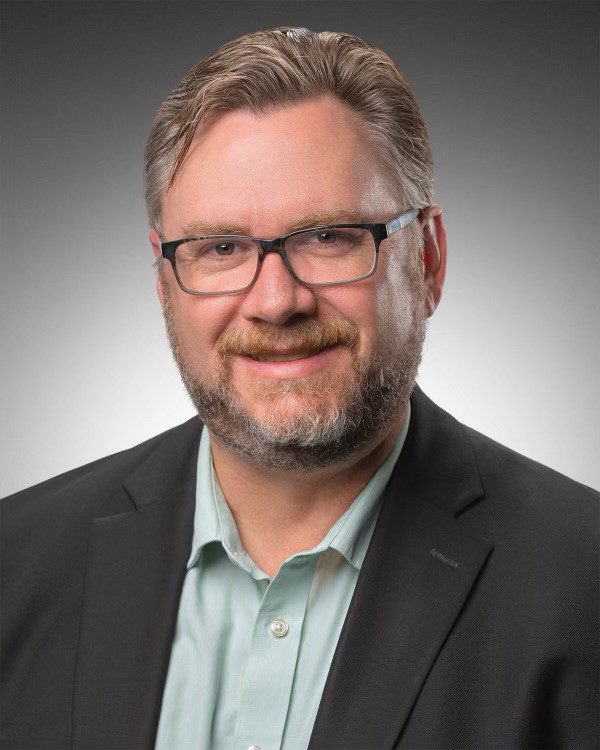
The finalists for WashingtonExec’s Pinnacle Awards were announced Oct. 13, and we’ll be highlighting some of them until the event takes place virtually Dec. 8.
Next is Artificial Intelligence Industry Executive of the Year (Public Company) finalist Michael Sean O’Brien, who’s chief technologist for intelligence, analytics and autonomous solutions at Northrop Grumman. Here, he talks key achievements, taking professional risks, career advice and more.
What key achievements did you have in 2020/2021?
In 2020/2021, I helped accelerate the adoption of artificial intelligence and related capabilities on critical operational programs, which, in turn, enhanced several important customer missions.
Additionally, I helped shift the culture and focus of our organization, and those of our customers, toward a more holistic and agile approach to the challenges and opportunities of creating operational AI systems. AI “breaks” a lot of traditional software engineering practices, requiring new approaches to make such capabilities tractable.
That said, AI isn’t just an engineering problem — it challenges acquisition practices, business models, risk assessment, infrastructure planning, recruiting, talent development and retention of staff.
AI doesn’t just enable change — it requires it, and I’m most proud of the work I’ve done to build and leverage institutional understanding of AI to help our company and our customers succeed.
What has made you successful in your current role?
Leadership for me means making the people around me better and more effective. I’ve learned that we are most successful when we include diverse perspectives and take a holistic approach to problem solving.
AI, which has been a core focus of mine, creates challenges and opportunities that go far beyond science and engineering, and so I have worked to educate, support and most of all, listen to our entire functional team, understand how AI affects their jobs and explore how their perspectives can help us leverage AI most effectively. This enabled us to identify robust strategies to accelerate and operationalize AI capabilities over the past several years.
What are your primary focus areas going forward, and why are those so important to the future of the nation?
I’m focused on making AI and related emerging capabilities more effective, reliable, responsible and governable. Though AI seems ubiquitous, our society is still in the early stages of AI adoption.
One of the biggest things holding us back from realizing the true promise of AI is our general lack of effective processes to understand and control the behavior of AI systems.
We need new and expanded practices not just in engineering, but in contracting, business management, quality assurance, infrastructure planning, risk assessment and project management that account for the unique challenges AI brings.
And yes — we need new engineering paradigms. This, in turn, will require changes to our institutional cultures. Success will make our people more productive, our businesses more profitable, our customer’s missions more effective, our economy stronger and our nation safer.
Which rules do you think you should break more as a government/industry leader?
One of the most devastating rules in our society right now is “stay in your lane.” We must get out of our lanes and collaborate more across institutional stovepipes, functional disciplines and up and down leadership chains.
We need to be more open to risk and learn to “fail fast” and iterate more quickly. This doesn’t mean acting without consequence or accountability — it means encouraging calculated risks, assessing progress rigorously, adjusting course constantly and advancing rapidly toward viable solutions.
What’s the biggest professional risk you’ve ever taken?
After 9/11, I decided to leave my mature, safe, tenure-track job in academia to join the defense industry and help make our nation more secure. It was a huge, mid-career leap into the unknown.
I took a risk that the skills I had learned from years of research and teaching in astrophysics would transfer to missions supporting national security. It was the best bet I ever made.
I found that analyzing vast datasets from the Hubble Space Telescope, modeling and simulating distant stellar interiors, and exploring how white dwarf stars could be used as particle physics laboratories had all given me a unique and powerful perspective on data science that could be of great use to national security missions.
I also discovered a passion for leadership, strategic thinking and organizational development that flourished under a series of mentors and leaders. Most of all, I’ve been able to apply my skills directly to help make our nation and world more safe and secure.
What’s your best career advice for those who want to follow in your footsteps?
The greatest successes of my career have come from multidisciplinary efforts that leveraged expertise from across different engineering, functional and mission domains. It is at the intersections of these domains that innovation is born.
Surround yourself with people of diverse perspectives who will support you and make you better — and work in turn to make them better too.
Don’t listen to those who insist that you (or your team) should “stay in your lane.” Most importantly, broaden your aperture and think holistically. We should attune ourselves to the broader set of challenges and opportunities that affect the overall success of our missions.
Sometimes, these issues are adjacent to our areas of expertise or the expertise of our organizations. If so, we should expand our team or our understanding, or both. In other words, embrace diversity and change.

